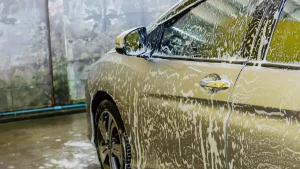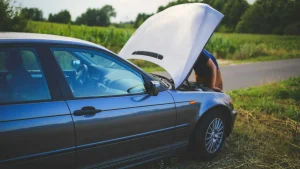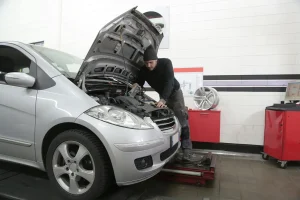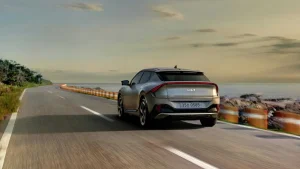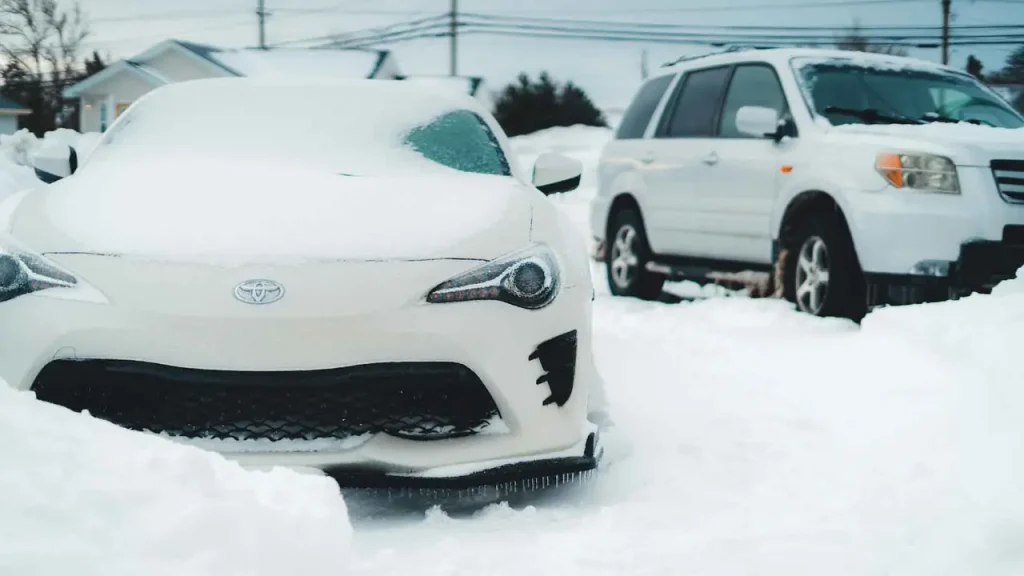
Essential Safe winter driving tips for UK Roads
The first snowflake hits the windscreen and suddenly, everyone forgets how to drive. It’s a baffling, yearly phenomenon. One minute you’re cruising along, the next you’re in a slow-motion ballet of brake lights and panic. Frankly, it’s maddening. But it doesn’t have to be your reality. With a solid grasp of some fundamental safe winter driving tips, you can navigate the treacherous roads with confidence instead of cold dread. This isn’t just about theory; it’s about practical, real-world advice that keeps you, your passengers, and everyone else on the road a whole lot safer. Whether you own your car or are just navigating the roads in a temporary vehicle, the principles are the same, something to keep in mind if you’re ever looking into the UK car rental and car sharing guide for a winter trip.
Navigating the Winter Roads: Essential Safe Driving Strategies
Mastering winter driving is less about bravery and more about preparation and respect for the conditions. The roads are fundamentally different when they’re covered in ice, snow, or slush. Your car will not behave the way it does on a dry summer day. Accepting this is the first step. The rest involves a combination of vehicle readiness and adjusting your own habits behind the wheel. These are the core tenets of any good collection of winter driving advice.
Preparing Your Vehicle for Winter Conditions
You wouldn’t go out in a blizzard wearing flip-flops, so why would you take your car into winter unprepared? It’s a recipe for disaster. Getting your vehicle ready isn’t just a good idea; it’s a critical safety measure. This is perhaps one of the most vital, yet often overlooked, best practices for winter road safety.
Essential Vehicle Checks Before Winter
Before the temperature plummets, get under the hood. Or, more realistically, get a professional to do it. Your antifreeze levels need to be correct to prevent your engine from turning into a giant ice cube. The oil viscosity might need to be changed for colder temperatures, and all your other fluids should be topped up. It’s also a good time to check your belts and hoses, as cold weather can make them brittle. This is a non-negotiable part of any winter car maintenance checklist for safe driving. Taking these proactive steps provides some of the most effective winter safety preparations before you even turn the key.
Tyre Care and Traction in Snow
Let’s talk about tyres. They are your single point of contact with the road, and in winter, that connection is tenuous at best. All-season tyres are, despite their name, a compromise. They’re okay in a lot of conditions but not truly great in any, especially heavy snow and ice.
If you live somewhere with proper winters, investing in a set of dedicated winter tyres is one of the most important safety measures you can follow. They’re made from a softer rubber compound that stays flexible in the cold, and their tread patterns are designed to bite into snow and slush. Knowing what type of tires for winter driving safety is essential. And for goodness sake, check your tyre pressure! Cold air causes pressure to drop, leaving your tyres underinflated and less effective. Keeping an eye on tyre and vehicle safety technology development can also give you an edge in understanding how to improve traction on slippery roads.
Battery Health for Cold Weather
I still have nightmares about the morning my car battery died on the coldest day of the year. The engine made that awful, slow, grinding sound that just screamed “nope.” Car batteries absolutely hate the cold. Their chemical reactions slow down, and their cranking power plummets. A battery that was perfectly fine in autumn can give up the ghost on the first frosty morning. Get it tested before winter sets in. If it’s more than three or four years old, consider replacing it proactively. Trust me. It’s a small price to pay to avoid being stranded. This simple check is one of those essential pieces of winter driving advice that saves you from a massive headache.
Wiper Blades and Windshield Washer Fluid
Visibility is life. If you can’t see, you can’t drive safely. It’s that simple. Old, cracked, or worn wiper blades will just smear salty slush across your windshield, creating a blinding mess. Replace them. It’s cheap and easy. While you’re at it, fill your reservoir with a winter-grade washer fluid that won’t freeze. The blue stuff. You’ll be using a lot of it. This is one of the easiest tips for safe driving in snowy conditions to implement.
Emergency Kit for Winter Driving
Hoping for the best but preparing for the worst is the mantra here. Your car should have a dedicated winter emergency kit. What to carry in a winter car emergency kit? Think about a shovel, a bag of sand or cat litter for traction, jumper cables, a tow rope, and an ice scraper (a good one!), and a flashlight with extra batteries.
Also include a first-aid kit, extra hats, gloves, a warm blanket, and some non-perishable snacks and water. Having a proper emergency kit for safe winter travel isn’t just a suggestion; it’s a core component of winter road preparedness.
Mastering Safe Driving Techniques in Snow and Ice
Once the car is ready, it’s time to work on the driver. Your inputs—steering, accelerating, braking—need a complete recalibration for winter. The name of the game is smoothness. Every action should be gentle, deliberate, and slow. The evolution of driver training has always emphasized adapting to conditions, and winter is the ultimate test. You can see how this philosophy is changing with the times by reading about driver training evolution and automotive industry impact. Applying these safe driving techniques for heavy snow is what separates a calm commuter from a roadside statistic.
Gentle Acceleration and Braking on Slippery Surfaces
Imagine there’s an egg between your foot and the pedals. That’s how gentle you need to be. Squeezing the accelerator slowly helps prevent wheel spin when you’re starting from a stop. When braking, apply gentle, steady pressure well in advance of where you need to stop. Slamming on the brakes is the fastest way to start a skid. Learning how to drive safely on icy roads starts with unlearning aggressive pedal work. This is one of the most crucial habits to adopt.
Maintaining Safe Following Distances
Tailgating is foolish in any weather. In winter, it’s downright reckless. Your stopping distance on ice can be up to ten times longer than on a dry road. Ten times! The three-second rule you use in the dry? Forget it.
You need a gap of at least eight to ten seconds between you and the car ahead. It will feel ridiculously large. It’s not. It’s the buffer you need to react and stop safely. Following safe distances for driving in winter weather is a non-negotiable rule.
Understanding and Handling Skids
Skids are terrifying, but they don’t have to end in a crash. The key is to not panic. A lot of people wonder what to do when encountering black ice. If the back of your car starts sliding (oversteer), gently take your foot off the accelerator and steer in the direction you want the car to go. It feels counterintuitive, but it works.
If the front of your car slides (understeer), ease off the gas and the steering angle slightly until the front tyres regain grip. In both cases, your instinct to slam on the brakes is wrong. That will only make it worse. Understanding how to prevent skidding on winter roads is a masterclass in delicate car control and one of the most advanced winter driving skills.
Navigating Hills and Curves in Winter
Hills are a special kind of winter challenge. When approaching a hill, build up some momentum before you get to the incline, and then let that momentum carry you up. Don’t try to power up the hill once you’re on it, as that will likely cause your wheels to spin. As you crest the hill, reduce your speed and proceed down as slowly as possible, preferably in a low gear. Curves require you to slow down much more than you normally would and to make your steering inputs as smooth as you possibly can. Following this advice can prevent a slide into a ditch.
Enhancing Visibility and Situational Awareness
You have to see and be seen. Winter does its best to obscure everything with snow, fog, and road spray. Fighting back is a constant battle, but it’s one you must win. These practices are all about maximizing the information you have.
Keeping Windows and Lights Clear
Before you move an inch, clear all the snow and ice from your entire vehicle. Not just a little peephole on the windscreen. All of it. The roof, the hood, the trunk, all windows, and especially all your lights and sensors. That sheet of snow on your roof can fly off and blind the driver behind you. It’s dangerous and, in many places, illegal. This is one of the most basic, yet essential, safety steps.
Dealing with Reduced Visibility (Fog, Snowfall)
When visibility drops, your speed must drop accordingly. In heavy snowfall or fog, use your dipped headlights. This is key for how to see clearly in winter fog. Don’t use your high beams; the light will just reflect off the snowflakes or fog droplets, making it even harder to see. If you have fog lights, now is the time to use them. If conditions get too bad, the smartest move is to pull over and wait it out.
Leveraging Modern Vehicle Safety Features
Modern cars are packed with technology designed to keep you safe. These systems are incredible aids, but they are not magic. They can’t break the laws of physics. Understanding what they do, and what they don’t do, is part of being a smart winter driver. The rapid advancements border on science fiction, almost touching on the world of autonomous vehicles and robotics in cars, but for now, the driver is still in charge.
How ABS, ESP, and Traction Control Assist in Winter
Anti-lock Brakes (ABS), Electronic Stability Program (ESP), and Traction Control are your electronic co-pilots. Traction Control limits wheel spin during acceleration. ABS prevents your wheels from locking up during heavy braking, allowing you to maintain steering control. You’ll feel it as a pulsing in the brake pedal; that means it’s working. Don’t pump the brakes on an ABS-equipped car. Just hold firm pressure. ESP is the most complex, using sensors to detect a skid and then braking individual wheels to help bring the car back under control. Understanding anti-lock brakes in snow is vital. These are amazing safety features built right into your car.
Understanding All-Wheel Drive (AWD) and Four-Wheel Drive (4WD)
So, is all-wheel drive better for winter safety? Yes and no. AWD and 4WD are fantastic for getting you going in slippery conditions. They provide excellent traction for acceleration. However, they do absolutely nothing to help you stop or turn faster. A heavy 4×4 SUV has just as much trouble braking on ice as a small hatchback. Never let AWD give you a false sense of security. It’s a common mistake that invalidates all other safe practices you might be following.
After the Drive: Post-Winter Road Maintenance Tips
Your duty of care doesn’t end when you park the car. The salt, sand, and grime from winter roads are corrosive and destructive to your vehicle’s components. A little post-drive care goes a long way.
Checking for Undercarriage Damage
Winter roads are notorious for potholes. Hitting one can cause serious damage to your tyres, suspension, and alignment. After a particularly rough drive, or at the end of the season, it’s worth having a look underneath or getting a mechanic to. A quick wash, especially an undercarriage spray, helps get the corrosive salt off.
Basic Winter Car Maintenance Checks
Keep an eye on things. Continue to check your tyre pressure, as temperatures fluctuate. Keep your washer fluid topped up. And listen for any new noises or vibrations. Consistent care is one of the best car maintenance tips for longevity, ensuring your vehicle is always ready. Adhering to these tips includes looking after the car itself. This proactive approach is one of the best practices for winter road safety.
Stay Safe on Winter Roads: A Recap of Key Strategies
Winter driving demands respect. It’s a skill, and like any skill, it requires practice and preparation. By getting your vehicle ready, stocking an emergency kit, and fundamentally changing how you accelerate, brake, and steer, you can conquer the cold.
Remember to be smooth, slow down, and leave enormous amounts of space. This advice isn’t just a collection of suggestions; they are a complete mindset shift. Drive smart, stay warm, and get to your destination safely. That’s the ultimate goal.



